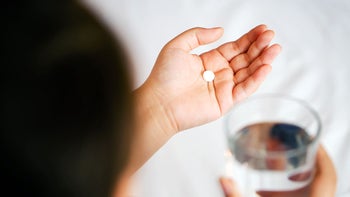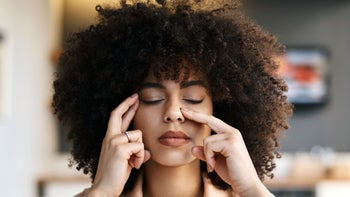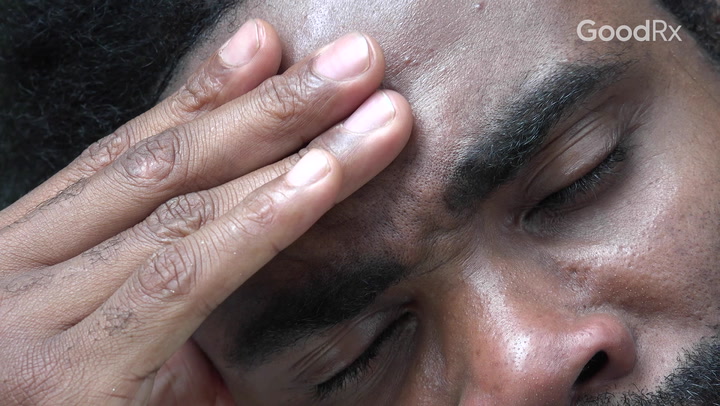
What’s the Relationship Between Headaches, Migraines, and Depression?
Key takeaways:
Headaches, migraines, and depression often occur together.
People with headaches and migraines may have a higher risk of depression. The opposite is true, too. People with depression often get headaches and migraines.
But it’s not clear how headaches, migraines, and depression are connected — or if one causes the other. The link may come down to risk factors, like serotonin activity in the brain, life experiences, or genetics.
Some medications for depression can also help with headaches and migraines. These include antidepressants like SSRIs, SNRIs, and tricyclics.
If you experience headaches or migraines and depression, you aren’t alone. People who have depression are more likely to get headaches or migraines. Plus, people who have headaches are also more likely to have depression.
Read on for more information about what connects headaches, migraines, and depression. We’ll also cover the best treatments and tips for talking to your healthcare provider.
Is there a link between depression and headaches?
Yes. There seems to be a link between depression and headaches. There’s evidence that people who have depression may be more likely to have different types of headaches, including:
Tension headaches: These cause a painful, squeezing sensation, usually on both sides of the head. They’re caused by muscle tension in the head or neck, which explains the name. Tension headaches are linked to stress, depression, and more.
Morning (wake-up) headaches: These headaches start early in the morning or are there when you wake up. They’re linked to depression, teeth grinding, and sleep apnea.
Migraine headaches: Migraines are a type of headache that can be severe. People who have migraines also typically get unique symptoms. These can include throbbing pain on one side of the head, sensitivity to light and sound, and nausea or vomiting. The exact cause of migraines isn’t clear.
And the reverse also seems to be true: People who have headaches and migraines are more likely to experience depression. This is especially true if their headaches are chronic or severe. In fact, some studies report that almost 4 out of 5 people with migraines will have depression at some point.
Migraines and headaches may also happen more often with other mental health conditions. There are links with anxiety disorders, post-traumatic stress disorder (PTSD), bipolar disorder, and substance use disorders.
Does depression cause headaches and migraines, or vice versa?
Scientists don’t know for sure. It’s not clear whether headaches lead to depression, if migraines and headaches are a symptom of depression, or if both are true.
But there’s some evidence that the risk goes both ways. Put another way, headaches increase the risk for depression, and depression increases the risk for headaches. This two-way risk seems to be stronger with depression and migraines than with other types of headaches.
Scientists aren’t sure why this happens. It’s likely that certain biological and environmental factors work together to increase the risk of both headaches and depression in some people.
Here are some of these proposed risk factors:
Brain neurotransmitters: Certain brain chemicals (neurotransmitters) might be involved in both headaches and depression. In fact, the levels of serotonin and dopamine are abnormal in people who have depression and migraines. Low levels of serotonin might make it more likely that you have both depression and migraines.
Family history: Your genes might also increase your risk of having depression and migraines. Both depression and headaches can run in families.
Life experiences: Certain life experiences, like childhood trauma, racial trauma, and chronic stress, can increase your risk for both headaches and/or depression.
Hormonal changes: Hormonal changes — like those during puberty, pregnancy, and menopause — are linked to both headaches and mood changes in many people.
Sleep problems: Trouble sleeping can trigger headaches and make you feel more depressed or anxious. It can be a vicious cycle, too, as both headaches and depression can make it harder to get a good night’s sleep.
Alcohol use: Drinking alcohol can make you feel more depressed, and it may also trigger headaches and migraines in some people.
Medical problems: Headaches and depression are linked to certain medical problems, like heart disease, irritable bowel syndrome, fibromyalgia, and chronic fatigue syndrome.
When should you see a doctor about depression and headaches?
You should see your provider if you’re struggling with depression and headaches or migraines. Untreated, these conditions can affect your relationships, ability to work, and quality of life. Your symptoms don’t have to be severe for you to seek help. The sooner that you get treatment, the sooner you can start feeling better.
When you meet with your provider, make sure that you tell them about all of your symptoms. Your provider will not assume that you have depression if you only talk about your migraine symptoms. Assume that your provider doesn’t know about any of your symptoms unless you have mentioned them. It’s important for your provider to hear about all of your symptoms so they can help you decide on the most appropriate treatment.
Your provider might ask you questions about your medical history. They may also have you complete screening questionnaires about your symptoms and order blood work or brain scans. Remember: Some medical conditions, such as hypothyroidism, can cause both headaches and depression. Bloodwork will help your provider figure out whether you need treatment for another medical condition, too. Brain scans, such as MRI (magnetic resonance imaging), can make sure that nothing else is causing your headache.
Treating depression and headaches together
If you’re experiencing depression and headaches or migraines, it’s a good idea to explore treatment options for both with your provider. It’s important to treat both conditions at the same time because treatment for one is not likely to work as well if the other isn’t being treated.
Here are some common approaches used to treat both conditions.
Therapy
Depression is usually treated with talk therapy, medication, or a combination of both. And therapy can help you better manage some types of headaches, like migraines. You can learn to identify which aspects of your headaches you can control.
For people who get headaches, therapy can also help manage emotions and increase overall functioning and quality of life. And biofeedback therapy can also help manage and reduce headaches.
Medication
There are many different types of medications used to treat depression, headaches, and migraines. Some are over the counter — like NSAIDs or acetaminophen (Tylenol). Others are prescription medications, like SSRIs or triptans. It’s hard to say which medication is best for headaches, migraines, and depression because it depends on your unique symptoms.
If you’re looking for specific details on how headaches and depression are treated with medications, check out these articles:
But here’s the main thing you need to know: Some medications can treat both headaches and depression at the same time. This includes antidepressants like SSRIs, SNRIs, and tricyclic antidepressants. These medications can help with depression and also prevent migraines and other headaches. So they may be a good choice for people who have both. Tricyclics, like amitriptyline, may be especially helpful with depression, tension headaches, and migraines — though they can also have more side effects.
Make sure to always talk to your provider before starting any medication to manage your depression or migraines. This is because some medications used to treat migraines and depression can interact with one another.
What are the challenges of having both depression and headaches?
Having headaches, migraines, and/or depression together can lead to unique challenges. People who have both conditions might experience certain difficulties with their treatment. For example:
Getting the correct diagnosis might be more difficult.
It can be challenging taking your medication as prescribed.
You might be more likely to take too much medication to manage difficult symptoms.
Migraines are more likely to become chronic when you have both conditions.
People who experience migraines may be more likely to attempt suicide.
Other ways to manage depression and headaches
It might help to know that there are other things you can do to help manage your depression and headaches. These include:
Practicing relaxation techniques: There’s evidence that relaxation exercises can help some people better manage their depression and migraines.
Getting enough sleep: Poor sleep has been linked to both migraines and depression. Getting 7 to 9 hours of uninterrupted sleep each night is important.
Moving your body: Research shows that exercise at least three times per week can help manage depression symptoms and may be helpful for people who get migraines, too.
Paying attention to stress: Chronic stress can affect your physical and psychological health in many ways. If you’re struggling with managing your stress, take time to learn how to reduce stress or manage its effect on your life.
Eating a well-balanced diet: There’s controversy around how the food you eat affects your migraines and mood. But eating a well-balanced diet with plenty of fruits, vegetables, whole grains, and lean proteins can lead to greater physical and mental well-being.
The bottom line
Headaches and depression affect millions of people around the world. And here’s the truth: The two often go hand in hand. It’s clear that people who have headaches and migraines are more likely to have depression. And people who have depression are more likely to have headaches.
Scientists don’t know exactly why this happens, but there’s help available. If you have headaches, depression, or both, talk to your healthcare provider. They can help sort out your headaches and mood, and they can get you connected with the best treatment for your unique combination of symptoms.
Why trust our experts?


References
Abdollahi, A., et al. (2017). Effect of exercise augmentation of cognitive behavioural therapy for the treatment of suicidal ideation and depression. Journal of Affective Disorders.
American Academy of Neurology. (2016). Migraine, tension headaches and irritable bowel syndrome linked?
American Migraine Foundation. (2016). Migraine, stroke and heart disease.
American Migraine Foundation. (2021). Migraine prevention 101: What it is, when to use it and why.
American Migraine Foundation. (2022). Alcohol and migraine.
Baskin, S. M., et al. (2011). Comorbidity between migraine and depression: Update on traditional and alternative treatments. Neurological Sciences.
Bender, E. (2004). Morning headaches may signal depression, anxiety disorders. Psychiatric News.
Breslau, N., et al. (1991). Migraine, psychiatric disorders, and suicide attempts: An epidemiologic study of young adults. Psychiatry Research.
Breslau, N., et al. (2000). Headache and major depression: Is the association specific to migraine? Neurology.
Buse, D. C., et al. (2009). Behavioral medicine for migraine. Neurologic Clinics.
Buse, D. C., et al. (2012). Psychiatric comorbidity of episodic and chronic migraine. Journal of Neurology.
Drinkaware. (2022). Alcohol and depression.
Goodwin, G. M. (2006). Depression and associated physical diseases and symptoms. Dialogues in Clinical Neuroscience.
Hamel, E., et al. (2007). Serotonin and migraine: Biology and clinical implications. Cephalalgia.
Jahangir, S., et al. (2020). Is there an association between migraine and major depressive disorder? A narrative review. Cureus.
Janke, E. A., et al. (2004). Depression increases onset of tension-type headache following laboratory stress. Pain.
Leo, R. J., et al. (2016). Migraine headache and bipolar disorder comorbidity: A systematic review of the literature and clinical implications. Scandinavian Journal of Pain.
Lewis, D. W. (2002). Headaches in children and adolescents. American Family Physician.
Ligthart, L., et al. (2010). The shared genetics of migraine and anxious depression. Headache: The Journal of Head and Face Pain.
Lin, Y., et al. (2016). Associations between sleep quality and migraine frequency. Medicine.
Lockett, D. C., et al. (1992). The effects of aerobic exercise on migraine. Headache: The Journal of Head and Face Pain.
Modgill, G., et al. (2011). A population-based longitudinal community study of major depression and migraine. Headache: The Journal of Head and Face Pain.
National Health Service. (2021). Headaches in pregnancy.
North American Menopause Society. (n.d.). Headaches.
Sofi, F., et al. (2013). Mediterranean diet and health status: An updated meta-analysis and a proposal for a literature-based adherence score. Public Health Nutrition.
Sorbi, M., et al. (1986). Differential effects of training in relaxation and stress-coping in patients with migraine. Headache: The Journal of Head and Face Pain.
Suni, E. (2023). How much sleep do we really need? Sleep Foundation.
Tsuno, N., et al. (2005). Sleep and depression. The Journal of Clinical Psychiatry.
Yang, Y., et al. (2016). Genetic epidemiology of migraine and depression. Cephalalgia.

























